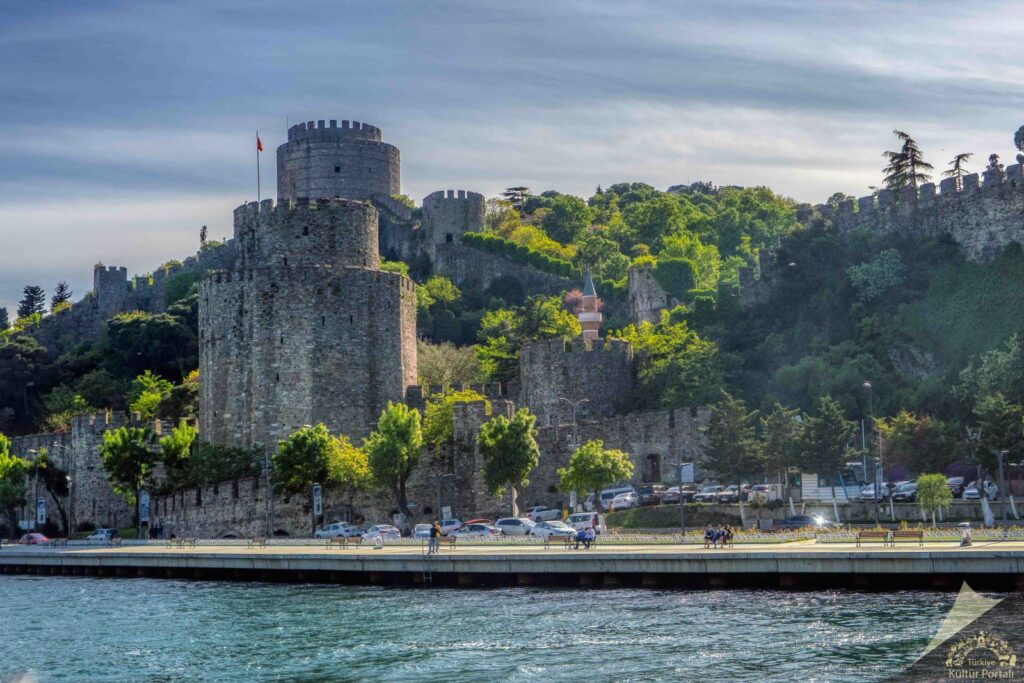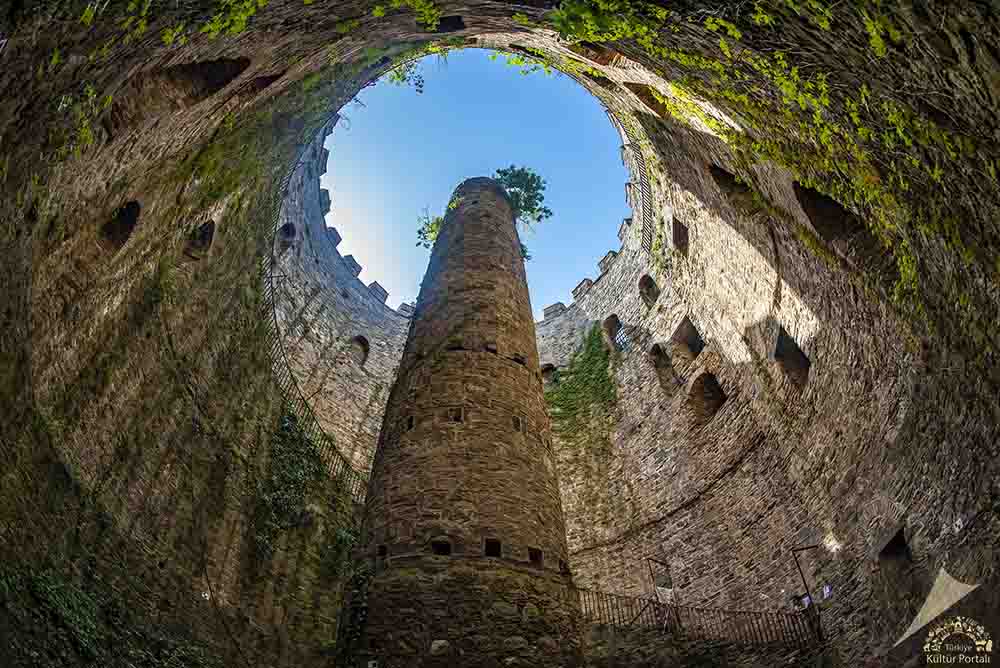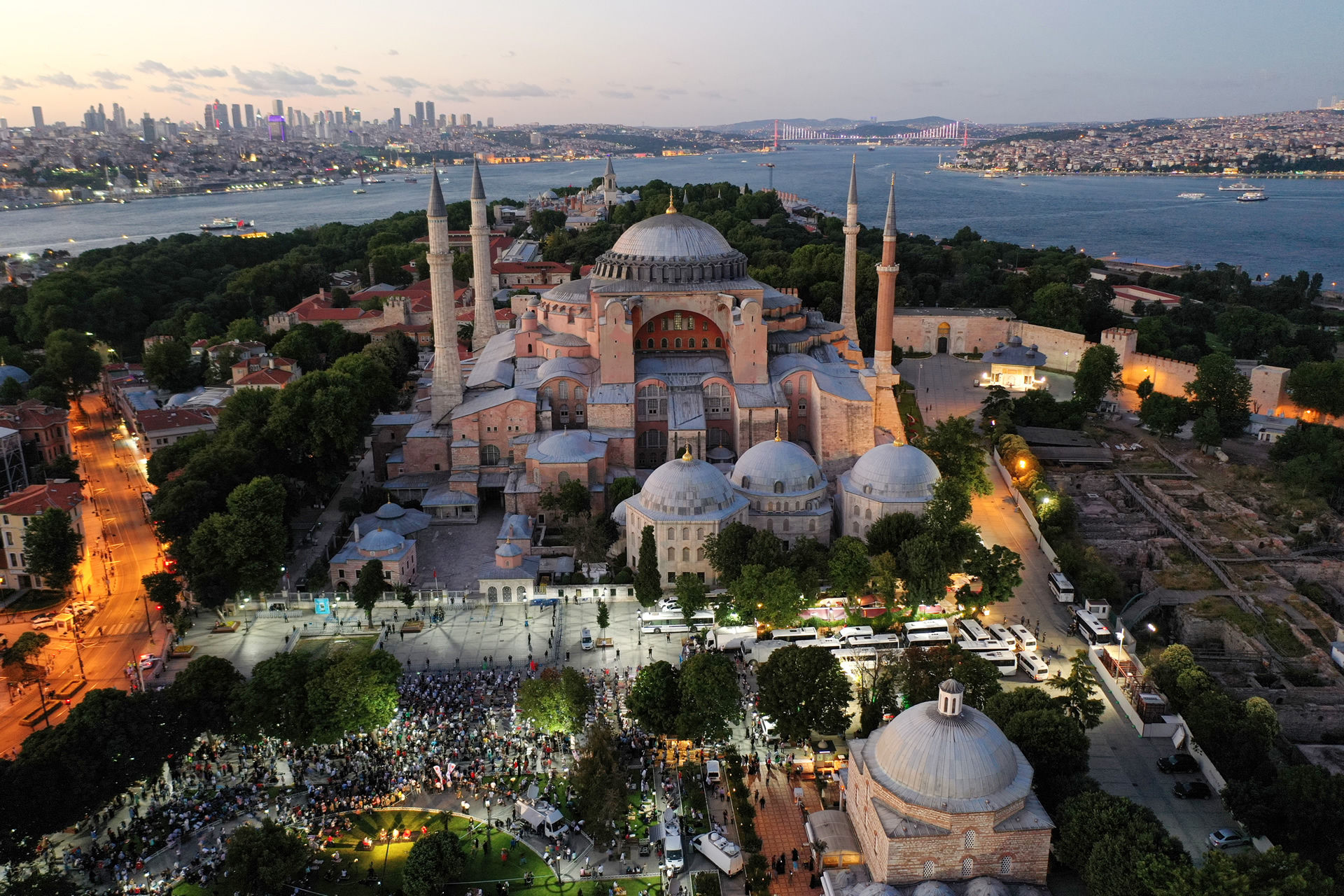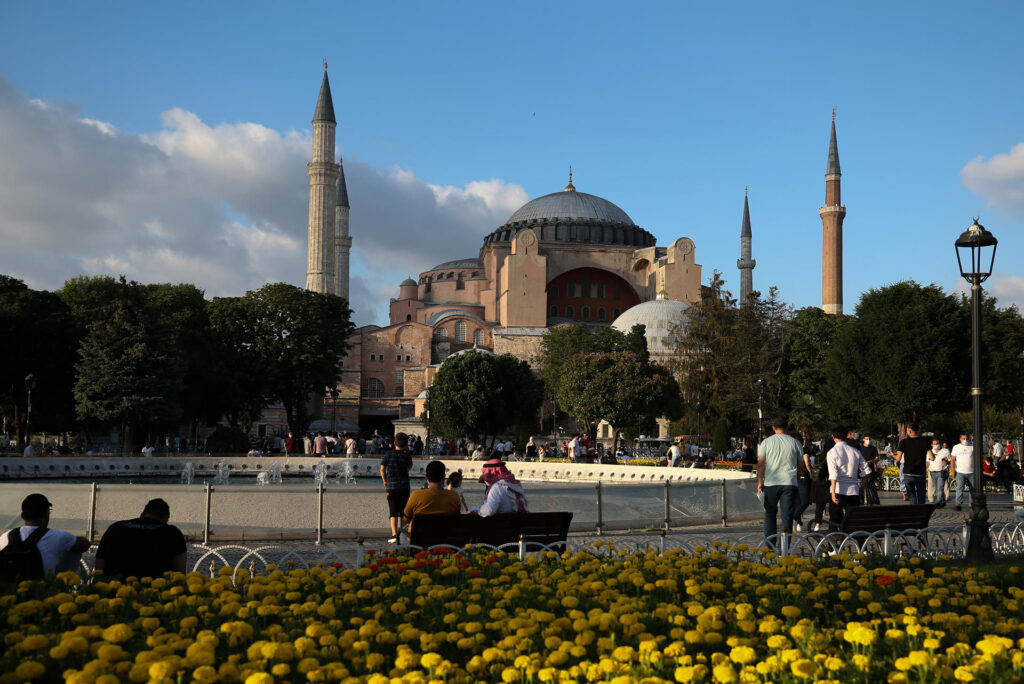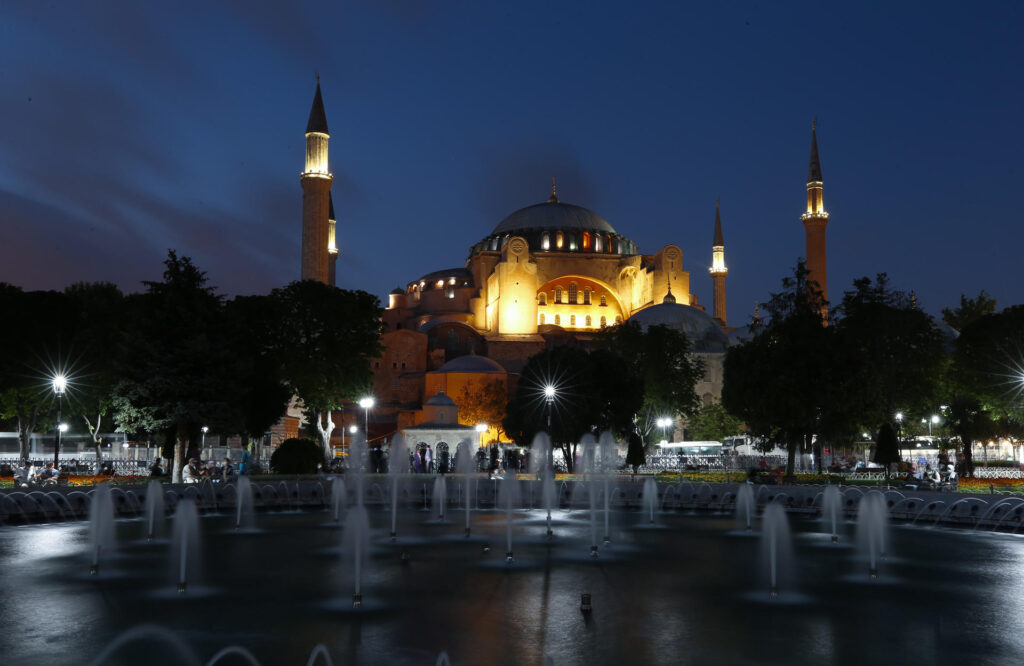12 Things to Do in Istanbul, Turkey
If you’re planning to visit Turkey, you must include a visit to Istanbul in your itinerary. This vibrant city offers a remarkable blend of ancient wonders and modern delights that will leave you in awe.
Immerse yourself in the captivating blend of ancient and modern that defines Istanbul, a beautiful city where history and contemporary life intertwine in a remarkable tapestry. With its bustling streets, vibrant markets, and a population of 15 million, this metropolis is a treasure trove waiting to be explored.
Delve into the layers of history that have shaped its architectural wonders, where majestic mosques, awe-inspiring palaces, turkish baths, and ancient ruins stand as testaments to the city’s storied past. Here, the echoes of mighty empires resonate, and the cultural heritage of civilizations converge. Istanbul beckons you to uncover its hidden gems, revealing a captivating fusion of religion, tradition, and the pulsating rhythm of everyday life.
Embark on a journey through time and immerse yourself in the dynamic spirit of this extraordinary city, where the old and the new coexist harmoniously, creating an experience that will leave you in awe.
Welcome to Istanbul, Turkey’s vibrant and captivating city that seamlessly blends the ancient and the modern. With its rich history, stunning architecture, and vibrant culture, Istanbul offers a plethora of unforgettable experiences for visitors.
Whether you’re visiting Istanbul for the first time or returning for another adventure, there are countless things to do in Istanbul. Get ready to embark on an unforgettable adventure as you delve into the heart of Istanbul, a city where tradition meets innovation, and East meets West; it is the only city which is spanning two continents.
Here are the best 12 things to do in Istanbul:
1. Admire Hagia Sophia
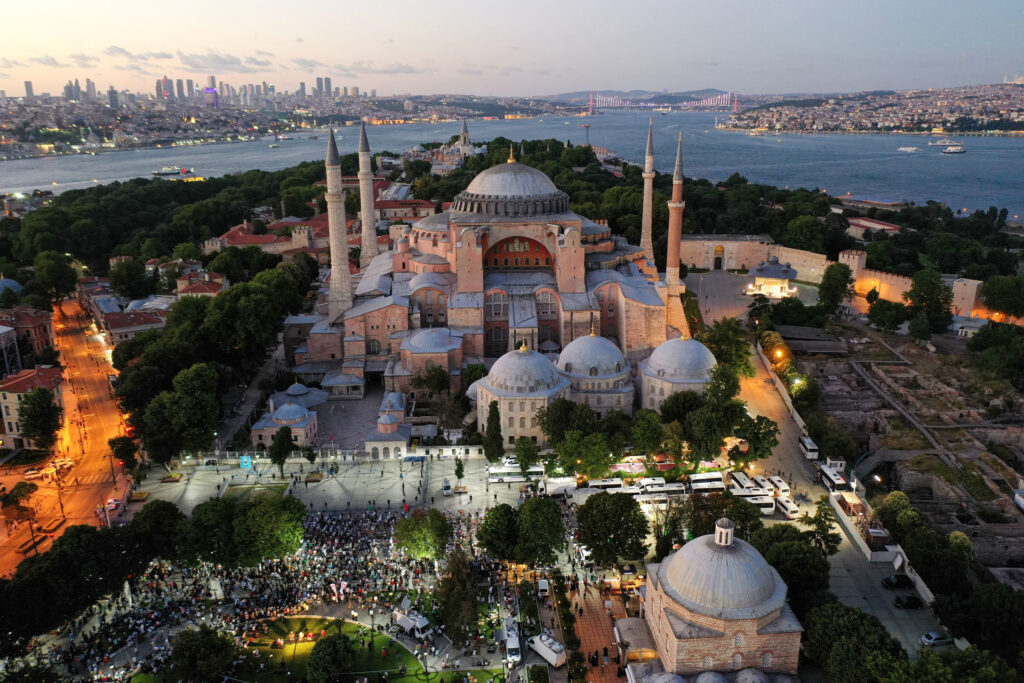
When it comes to things to do in Istanbul, a visit to Hagia Sophia is an absolute must. This iconic landmark stands as a testament to the city’s rich history and cultural significance.
Short History of Hagia Sophia
Hagia Sophia has been built three times in the same location. The first construction dates back to the reign of Emperor Constantine, in the 4th century, and was known as the “Great Church.” It was destroyed in a fire during a rebellion in 404.
The second Hagia Sophia was built on top of the ruins of the first one by Emperor Theodosius II in 415. It was also a basilica-style structure but was destroyed during the Nika Revolt in 532. Emperor Justinian decided to build a grander and more magnificent third Hagia Sophia immediately after the revolt.
The third and current Hagia Sophia was constructed by Emperor Justinian between 532 and 537. Throughout history, it suffered damages from riots, wars, and natural disasters, including the Fourth Crusade in 1204 when it was plundered. After the Latin occupation of Constantinople, it was converted into a Roman Catholic cathedral until the Byzantine rule was restored.
The Ottomans highly valued Hagia Sophia, and it became a mosque after the conquest of Constantinople in 1453. Sultan Mehmed the Conqueror and other Ottoman sultans paid great attention to its preservation and made significant additions and repairs. Architect Sinan’s contributions were particularly influential in maintaining the structure’s stability and resilience.
Over time, various features such as mihrab, minbar, minarets, sultan’s lodge, fountain, madrasa, library, and soup kitchen were added, transforming Hagia Sophia into a magnificent complex. The interior decorations also received great attention, incorporating Turkish arts like calligraphy and ceramics.
In the 1930s, restoration work began, and Hagia Sophia was closed to the public. It was later converted into a museum by a Cabinet decision in 1934. However, in 2020, the Council of State annulled this decision, and subsequently, President Recep Tayyip Erdoğan issued a decree to reopen Hagia Sophia for worship.
Overall, Hagia Sophia represents a significant historical and cultural symbol, reflecting the blending of Byzantine and Ottoman heritage, and has undergone multiple transformations throughout its existence.
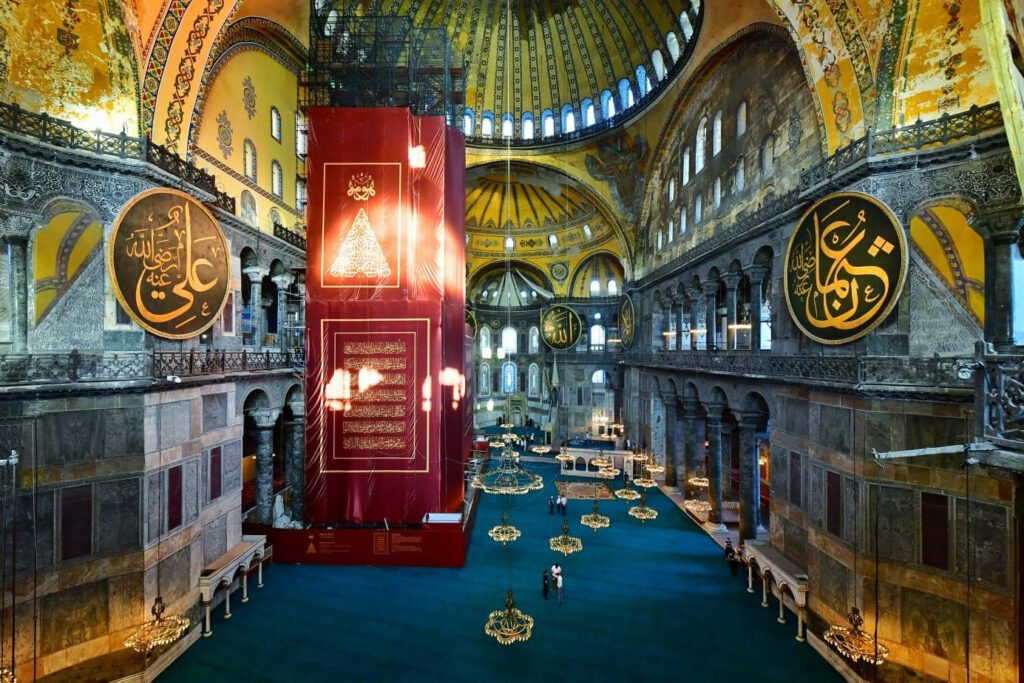
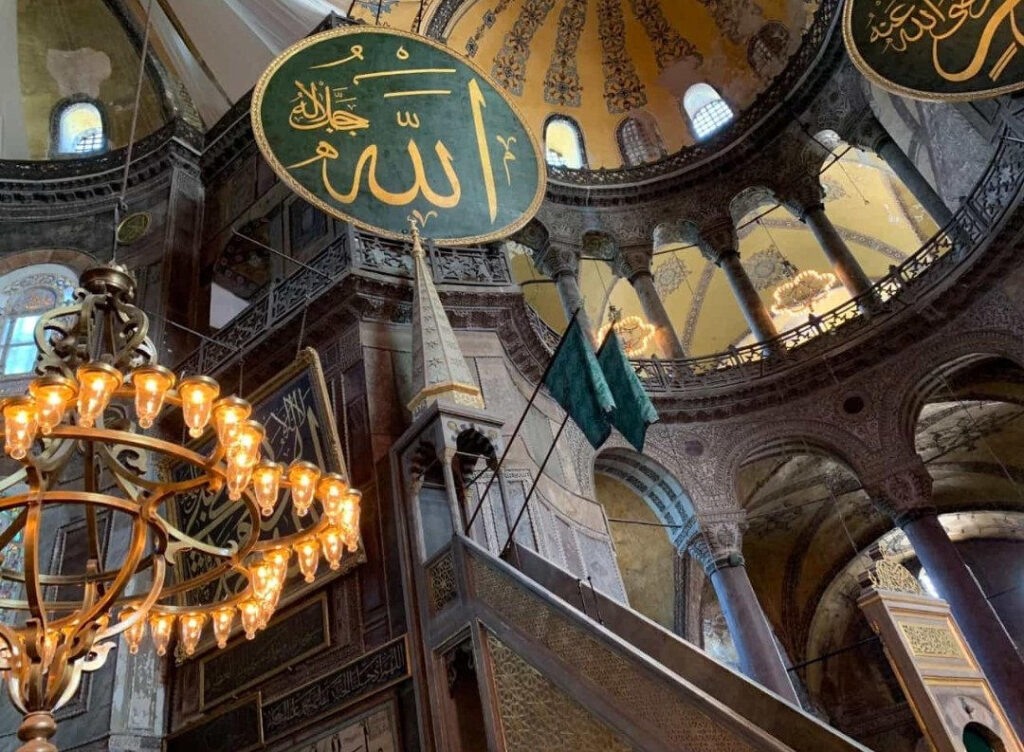
Step-by-step guide on how to visit Hagia Sophia
1. Plan your visit:
Determine the date and time you wish to visit Hagia Sofia. Consider checking the official website or contacting local tourist information for any updates on visiting hours, ticket prices, or special events.
2. Transportation:
Hagia Sofia is located in the Sultanahmet neighborhood of Istanbul, Turkey. You can reach it by various means of transportation, such as taxis, public buses, trams, or the Istanbul Metro. Consider using public transportation as parking around the area can be limited.
3. Entrance Tickets:
Purchase your entrance tickets in advance if possible, especially during peak tourist seasons. You can either buy them online or at the ticket booths on-site. Check for any specific requirements, such as presenting a valid identification document for ticket purchase or entry.
4. Security Check:
Upon arrival at Hagia Sofia, expect to go through a security screening, similar to airport procedures. Ensure that you comply with the security regulations and cooperate with the staff.
5. Dress Code:
Respect the cultural and religious significance of the site by adhering to a modest dress code. Both men and women should cover their shoulders and knees. Avoid wearing revealing clothing or items with offensive symbols or messages.
6. Audio Guides or Guided Tours:
Consider using audio guides or joining a guided tour to enhance your experience and gain more insights into the history, architecture, and significance of Hagia Sophia. These resources are available for rent or as part of organized tours.
7. Exploring the Interior:
Once inside, take your time to explore the interior of Hagia Sofia. Admire the grandeur of the architecture, intricate mosaics, and historical artifacts. Be mindful of other visitors and follow any guidelines or restrictions provided by the staff.
8. Photography and Video Recording:
Check the rules regarding photography and video recording within Hagia Sophia. Some areas may have restrictions or require additional permits. Respect any signage or instructions to ensure the preservation of the site and the comfort of other visitors.
9. Silence and Respect:
Maintain a calm and respectful demeanor throughout your visit. Hagia Sofia holds cultural and religious significance, so avoid loud conversations, disruptive behavior, or any actions that may disturb others or compromise the sanctity of the space.
10. Souvenirs and Facilities:
Before leaving, you may wish to explore the gift shops or cafeterias within Hagia Sofia to purchase souvenirs or enjoy refreshments. Facilities such as restrooms and drinking fountains are also available for visitors’ convenience.
Remember to check for any additional guidelines or requirements specific to the time of your visit. By following these steps, you can have a memorable and respectful visit to Hagia Sophia while appreciating its historical and cultural significance.
2. Visit the Blue Mosque
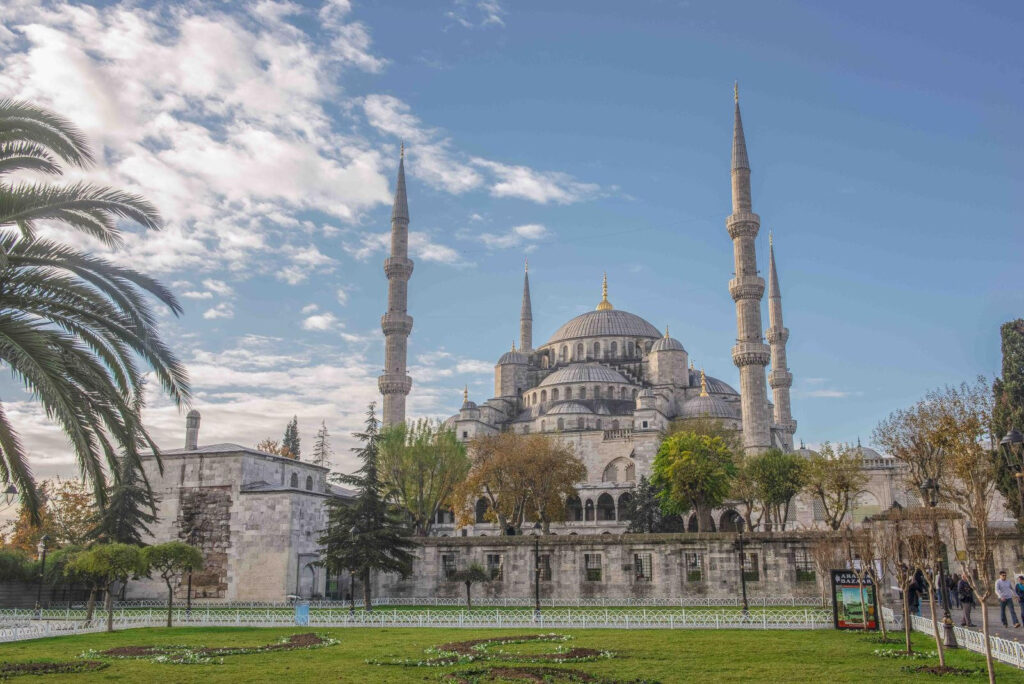
As a vibrant city, there are countless things to do in Istanbul, but one experience that should not be missed is a visit to the iconic Blue Mosque.
The Sultan Ahmed Mosque, also known as the Blue Mosque, was built during the 17th century by Sultan Ahmed I and architect Sedefkar Mehmet Ağa. It is an impressive masterpiece adorned with blue Iznik tiles. The mosque’s courtyard, white pulpit, and dome decorations showcase the beauty of Ottoman culture and craftsmanship.
Situated across from the Hagia Sophia, the placement of the mosque was intentional to create a striking contrast between Islamic and Byzantine architecture. Some of the architectural features of the Blue Mosque are the spacious courtyard, the intricate design of the interior, and the unique minarets. The mosque’s remarkable interior features numerous ceramics and calligraphy, while the exterior boasts a grand entrance and a beautifully decorated minbar.
The Sultan Ahmed Mosque stands as a testament to the rich history and artistic heritage of Istanbul. We could say that the Blue Mosque is one of the best popular tourist destination in Istanbul city center.
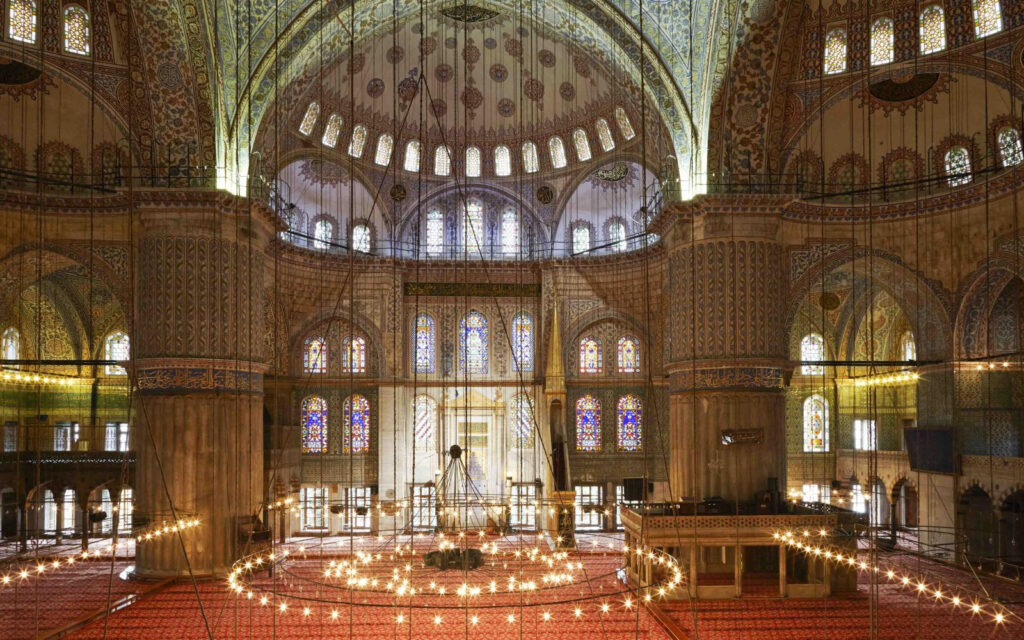

How to visit the Blue Mosque
1. Plan your visit:
Determine the date and time you want to visit the Blue Mosque. It is open to visitors every day, except during prayer times, and it’s advisable to visit during non-prayer times to explore the beautiful mosque more freely.
2. Dress appropriately:
As the Blue Mosque is an active religious site, it’s important to dress modestly and respectfully. Men should wear long pants, and women should cover their heads, shoulders, and legs. Scarves and cover-ups are usually available at the blue mosque entrance if needed.
3. Timing:
The mosque has specific visiting hours, and it’s recommended to arrive early to avoid crowds. The mosque is closed to visitors during prayer times, which occur five times a day and last for about 30 minutes. Check the prayer times in advance to plan your visit accordingly.
4. Entry:
Entrance to the Blue Mosque is free. Upon arrival, you’ll need to remove your shoes and place them in plastic bags provided at the entrance. Remember to be respectful and quiet inside the mosque.
5. Explore the mosque:
Once inside, take your time to explore the architectural beauty and intricate details of the mosque. Admire the stunning blue İznik tiles that adorn the interior walls, the grand central dome, and the stained glass windows. Take note of the elegant minbar (pulpit) and the exquisite mihrab (prayer niche) as well.
6. Follow the rules:
While inside the mosque, remember to maintain a quiet and respectful demeanor. Avoid touching any artifacts or stepping on the carpeted prayer areas. Photography is allowed but be mindful of other visitors and avoid using flash or disturbing anyone’s worship.
7. Visit the courtyard:
After exploring the interior, you can also spend some time in the spacious courtyard of the Blue Mosque. Admire the architecture, the ablution fountains, and enjoy the serene atmosphere of this historic site.
Remember to check for any updates or restrictions regarding visiting hours or entry requirements before your visit, as these can vary. It’s also a good idea to consult a reliable tourist guide or website for more detailed information and recommendations for your visit to the Blue Mosque.

Activities that you may do after visiting the Blue Mosque
1. Explore the Sultanahmet Square, which is the heart of Istanbul’s historical district and is located right in front of the Blue Mosque. Take a leisurely stroll through the square, surrounded by landmarks such as the Hagia Sophia, the Basilica Cistern, and the Obelisk of Theodosius. Admire the architectural wonders and enjoy the vibrant atmosphere.
2. Nearby the Blue Mosque, you’ll find the Basilica Cistern, one of the historic sites of Istanbul, an underground marvel that once served as a water reservoir during the Byzantine era. The Basilica Cistern, also known as the “Yerebatan Sarnıcı” in Turkish, is one of the city’s most unique and intriguing historical sites, offering visitors a glimpse into Istanbul’s rich past. Descend into its cool depths and wander through the atmospheric columns and dimly lit walkways. When planning your visit to the Basilica Cistern, it’s advisable to check the opening hours and consider arriving early to avoid crowds. Exploring the Basilica Cistern takes approximately 30 minutes to an hour, depending on your pace and interest in the details.
3. Treat yourself to some delicious Turkish cuisine. Sample local delicacies such as Turkish kebabs, lahmacuns, pides, and baklava. You can find numerous restaurants and eateries in the Sultanahmet area offering authentic flavors and traditional dining experiences.
3. Explore the Topkapi Palace
One of the top things to do in Istanbul, Turkey is to explore the Topkapi Palace.

Short History of the Topkapi Palace
The Topkapı Palace was the residence and administrative center of the Ottoman sultans. It’s been one of the most beautiful palaces throughout the Turkish History. It was built by Sultan Mehmed II between 1460 and 1478 and underwent additions over time.
The sultans and palace residents lived there until the mid-19th century when they moved to the Dolmabahçe Palace, due to the inadequacy of Topkapi Palace in meeting the protocol and ceremonial needs of the time. However, the palace continued to be used for state ceremonies and the preservation of the treasury, sacred relics, and imperial archives. After the abolition of the Ottoman monarchy in 1922, Mustafa Kemal Atatürk ordered the conversion of Topkapı Palace into a museum on April 3, 1924.
The initial palace constructed by Mehmed II was known as the “Old Palace” and was located in Beyazıt, the present-day site of Istanbul University. Afterward, Mehmed II commissioned the construction of the Çinili Köşk and later built the Topkapı Palace, where he eventually resided. The name “Topkapı Sarayı” (Topkapı Palace) was given to the new palace when a large wooden seaside palace near the Byzantine walls, called “Topkapusu Sahil Sarayı,” was completely destroyed by fire.
The design of Topkapı Palace was influenced by the Ottoman state philosophy and the relationship between the palace and its subjects. It drew inspiration not only from the plan but also from the magnificence of the Edirne Palace, built by Mehmed II’s father, Sultan Murad II, near the Tunca River. The palace consists of various courtyards, gardens, administrative buildings, residences for the sultan and officials, and the Harem, which is a part of the Enderun organization.
Located on Sarayburnu at the tip of the Istanbul Peninsula, between the Marmara Sea, the Istanbul Strait or Bosphorus River, and the Golden Horn, the palace is surrounded by the high walls of the “Sur-ı Sultani” on land and Byzantine walls on the sea side.
It covers an area of approximately 700,000 square meters, with a significant portion dedicated to the Hasbahçe (Imperial Gardens). The palace features three main gates (Bâb-ı Hümâyun, Bâbüsselâm, Bâbüssaâde), four courtyards, the Harem, the Hasbahçe (Gülhane), and other gardens.
While Topkapi Palace itself was relatively modest, the empire’s significant expenses were primarily directed towards magnificent mosques, barracks, bridges, caravanserais, and lodging facilities. Even the renowned 16th-century architect Mimar Sinan only constructed a small portion of the palace.
The unique buildings, exquisite tiles, and the palace’s integration with nature, along with its location on Sarayburnu, contribute to its natural beauty and grandeur. Furthermore, the palace’s extraordinary collections and captivating historical narratives make it one of the most remarkable palaces in the world.
Positioned on the historic peninsula of Istanbul, the Topkapi Palace enjoys a strategic location that allows visitors to admire panoramic vistas of the Bosphorus Strait, which separates the European and Asian side of the city.
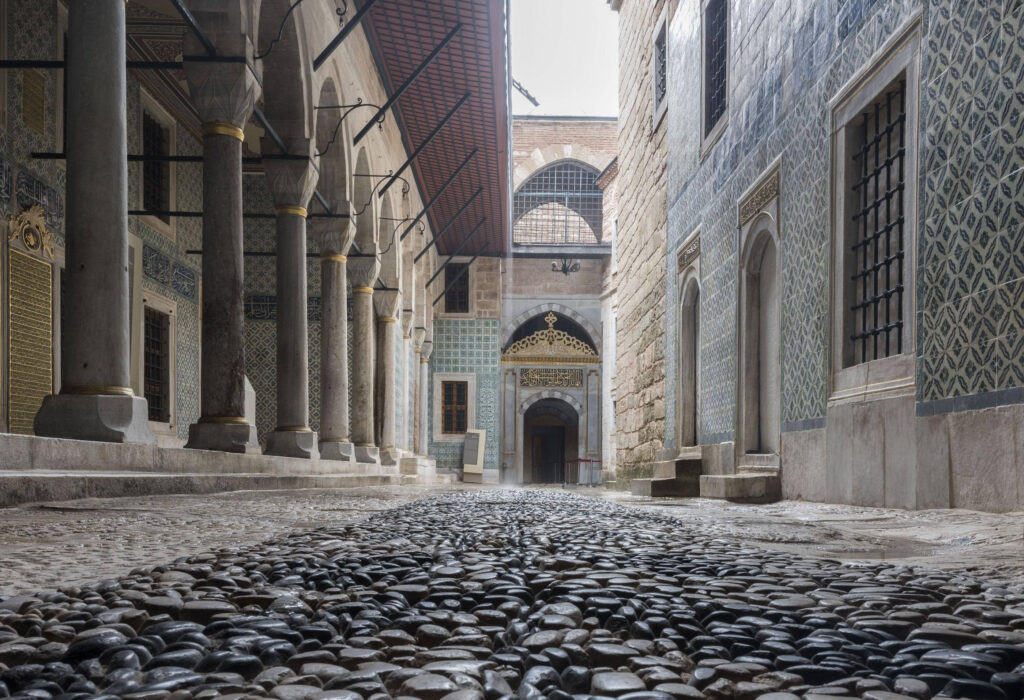
How to visit the Museum of Topkapi Palace
1. Location:
The Topkapi Palace Museum is located in Istanbul, Turkey, specifically on Sarayburnu in the Fatih district.
2. Operating Hours:
The museum is generally open to visitors every day except Tuesdays. However, it is advisable to check the official website or contact the museum for the most up-to-date information regarding operating hours, as they may vary.
3. Entrance Fee:
There is an entrance fee to visit the museum. The fee may vary for different categories of visitors, such as adults, students, and seniors. It is recommended to check the official website or inquire beforehand to confirm the current ticket prices.
4. Plan Your Visit:
Topkapi Palace is quite extensive, so it’s a good idea to plan your visit in advance. Determine the sections and areas you are most interested in exploring within the palace complex. Some of the notable areas include the Imperial Treasury, Harem, courtyards, and exhibition halls displaying various artifacts.
5. Guided Tour or Self-Guided:
Decide whether you prefer a guided tour or exploring the museum on your own. Guided tours can provide in-depth information and insights about the history, architecture, and significance of the palace. If you choose a guided tour, check if there are any scheduled tours available and if they require separate booking or additional fees.
6. Museum Etiquette:
While visiting the museum, it’s important to follow certain etiquette guidelines. Respect the displayed artifacts and exhibitions by refraining from touching them. Also, note that photography may be restricted in certain areas or for specific artifacts, so pay attention to any signage indicating photography rules.
7. Accessibility:
If you have any specific accessibility requirements, it’s recommended to contact the museum in advance to inquire about facilities and services available for visitors with disabilities.
8. Additional Information:
Keep in mind that Topkapi Palace is a popular tourist attraction, especially during peak seasons. It’s advisable to arrive early to avoid long queues and to ensure a more comfortable and enjoyable visit.
Remember, the details provided here are based on general information, and it’s always recommended to check the official website or contact the Topkapi Palace Museum directly for the most accurate and up-to-date information regarding visiting hours, ticket prices, and any specific guidelines or requirements.

4. See the Suleymaniye Mosque & Complex
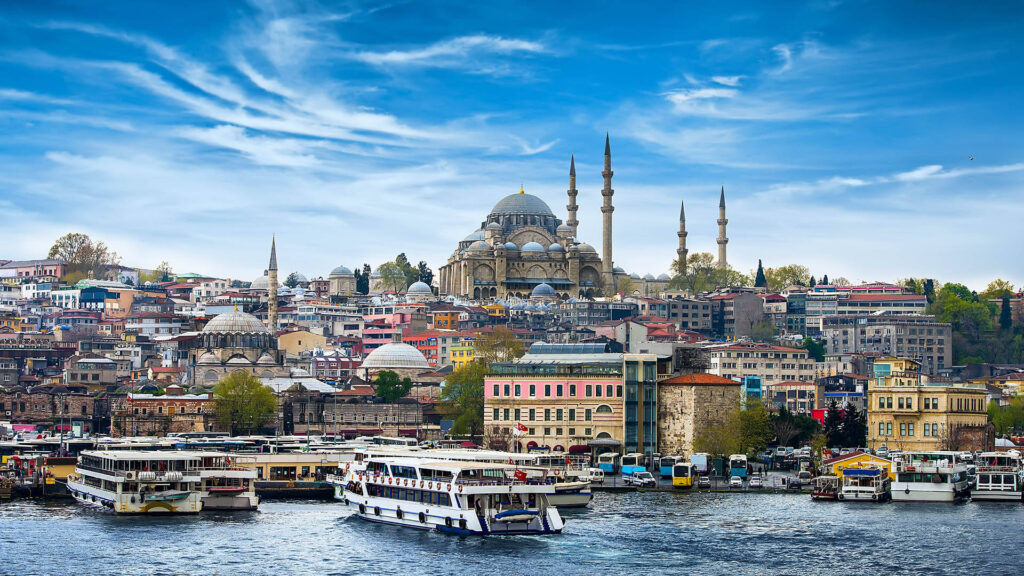
Süleymaniye is a historical neighborhood located on the third hill of Istanbul, Turkey. It sits on the slope facing the Golden Horn, offering a beautiful and expansive view, especially visible from places like the Topkapı Palace.
Surrounded by the neighborhoods of Demirtaş, Hoca Gıyaseddin, Molla Hüsrev, Beyazıt, and Mercan, Süleymaniye gained prominence after the construction of Süleymaniye Mosque and its complex in the 16th century.
The most significant architectural structure in Süleymaniye is Süleymaniye Mosque and its complex. Designed by the humble and ambitious architect Mimar Sinan, who placed 365 major structures within his 100-year career, Süleymaniye Mosque and its complex marked a turning point in Ottoman architecture.
The Süleymaniye Complex is a prime example of an Ottoman külliye, a complex of buildings centered around a beautiful mosque. It was constructed in a prominent location, much like the ancient Agora, at the heart of the city or in a place intended to be made bustling.
The selection of Süleymaniye’s site received particular attention from Sultan Suleiman the Magnificent. The neighborhood, where Muslims were in the minority, was chosen with the intention of Islamizing the area and establishing a new neighborhood in Istanbul.
Süleymaniye evolved into more than just a külliye; it became an institutionalized social image. Like St. Peter’s in Rome, Notre Dame in Paris, and St. Paul’s in London, Süleymaniye became a symbol of Istanbul. It was the largest külliye, educational center, soup kitchen, hospital, and trading center of the Ottoman Empire. The külliye was the heart of Istanbul’s social life.
The construction of Suleymaniye Mosque and its complex involved the largest construction project in the history of Ottoman architecture. The endowments allocated to the construction, maintenance, and operation of the külliye, according to Evliya Çelebi, included the spoils of Belgrade, Rhodes, and Malta.
To fund its maintenance and operation, 221 villages, 30 hamlets, 2 neighborhoods, 7 mills, 2 fishing weirs, 2 piers, 2 farms, 2 islands, 1 meadow, and the produce of 5 villages were endowed. Historian Peçevi recorded that 896,380 filori and 82,900 akçe were spent on the construction of the külliye.
Overall, Süleymaniye’s rich historical significance, highlighted by the Suleymaniye Mosque and its complex, makes it a noteworthy neighborhood in Istanbul, showcasing its architectural, cultural, and religious heritage.
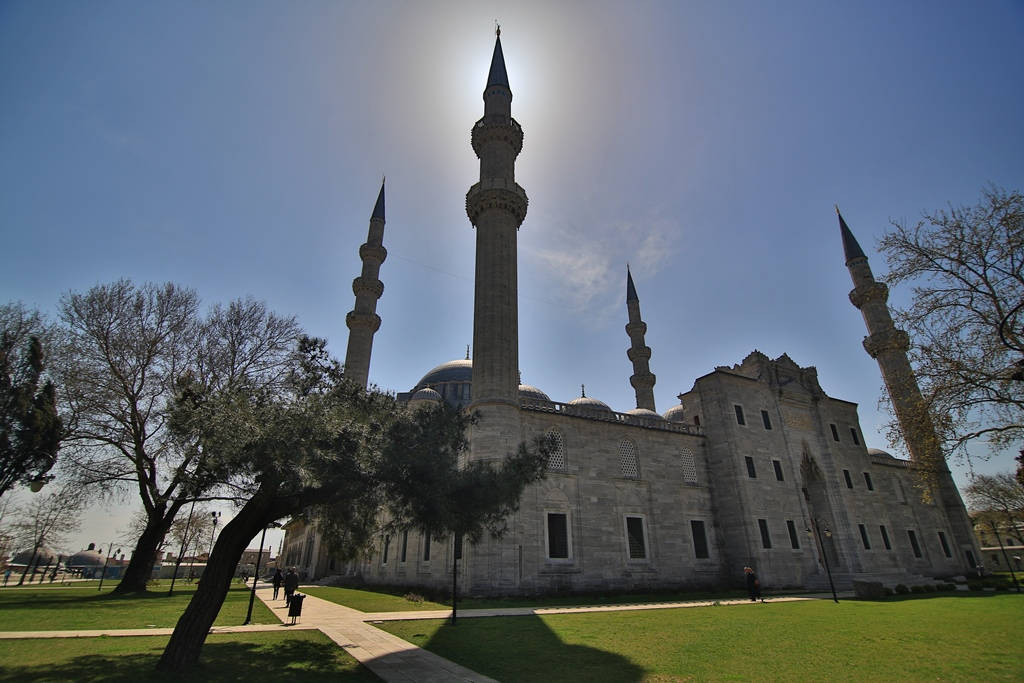
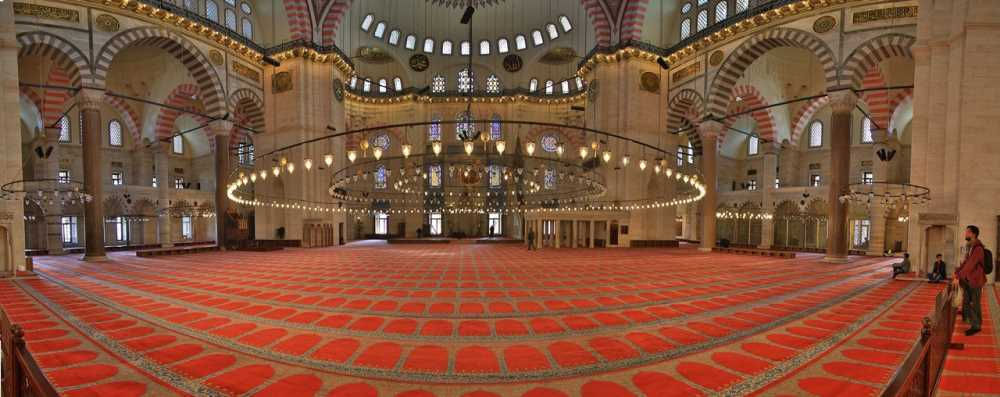
Important features of the Suleymaniye Mosque
1. Architectural Design
Suleymaniye Mosque is a grand example of Ottoman architecture, showcasing the classical Ottoman style and the most magnificent art technique.
The mosque’s wide-domed space design reaches towards the sky, exhibiting beauty and grandeur.
2. Innovative Approach
Architect Sinan applied an advanced technique in Suleymaniye Mosque, surpassing even the artistry employed in Hagia Sophia.
The mosque combines the structural system of the prayer space with the architectural style of the mosque’s colonnades, creating a unified space.
3. Illuminated Space
In contrast to the darker atmosphere of Hagia Sophia, Suleymaniye Mosque is a brightly lit space, allowing ample natural light to fill the interior.
4. Air Purification Mechanism
Inside the mosque, an interesting air purification mechanism was implemented by Sinan.
An upper room above the entrance gate served the purpose of extracting and expelling the heated and polluted air generated during crowded prayers.
There is a rumor that high-quality ink was produced from the collected soot in this room.
5. Decoration
Süleymaniye Mosque is not extensively adorned with decorative elements.
It features classic muqarnas ornaments embellishing the niches and capitals, two-tone stones on the arches, stained glass windows on the mihrab wall, and minimal use of ceramic tiles.
The decorative elements have not survived to the present day, as the emphasis was more on inscriptions rather than ornamentation.
6. Inscriptions
The mosque prominently displays inscriptions, which is a common feature in Islamic architecture. These inscriptions include classic unchanged phrases such as “Allah, Muhammed, Nur Sura, Fatiha, Besmele,” emphasizing the religious significance of the mosque.
7. Exterior Design
The mosque’s notable exterior features are its spacious side galleries and multi-story structure.
It is adorned with four minarets, symbolizing that Süleymaniye Mosque was built during the reign of Sultan Suleiman, the fourth ruler after the conquest of Istanbul and the tenth Ottoman sultan overall.
The mosque’s exterior design is considered one of the finest examples of 16th-century art.
These features collectively make Süleymaniye Mosque a remarkable architectural masterpiece and a significant representation of Ottoman Empire’s architectural and artistic achievements.
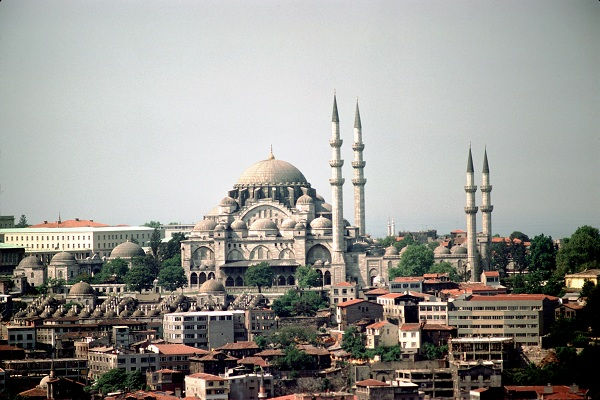
5. Do Shopping in the Grand Bazaar

When visiting Turkey, one of the things to do in Istanbul is to go to the Grand Bazaar, which provides an immersive experience that showcases the city’s vibrant culture and centuries-old trading traditions.
The Grand Bazaar, located in the heart of Istanbul, is a vibrant and historic marketplace that has been captivating visitors for centuries. With its enchanting atmosphere and rich cultural heritage, it stands as one of the world’s oldest and largest covered markets, offering an unforgettable shopping experience.
As you step into the Grand Bazaar, you’ll find yourself immersed in a labyrinth of narrow streets and bustling alleys, adorned with vibrant colors, ornate archways, and intricate mosaic patterns. The market spans over 65 streets and houses more than 3,500 shops, making it a treasure trove for avid shoppers and explorers.
Here, you can find an astonishing array of goods, from traditional Turkish carpets and exquisite handmade ceramics to intricate jewelry, leather goods, spices, textiles, and much more. The market is renowned for its craftsmanship, and you’ll encounter skilled artisans who have honed their skills through generations, carrying on age-old traditions.
While navigating through the maze of shops, take a moment to appreciate the ambiance and immerse yourself in the vibrant energy of the bazaar. Engage in friendly haggling with the shopkeepers, who are often eager to share stories and insights about their products. Remember that bargaining is a common practice in the Grand Bazaar, so feel free to negotiate prices to ensure a fair deal.
As you wander through the maze-like alleys, be sure to take in the architectural marvels that surround you. Marvel at the majestic domes, towering arches, and intricately adorned façades that showcase the grandeur of Ottoman-era architecture.
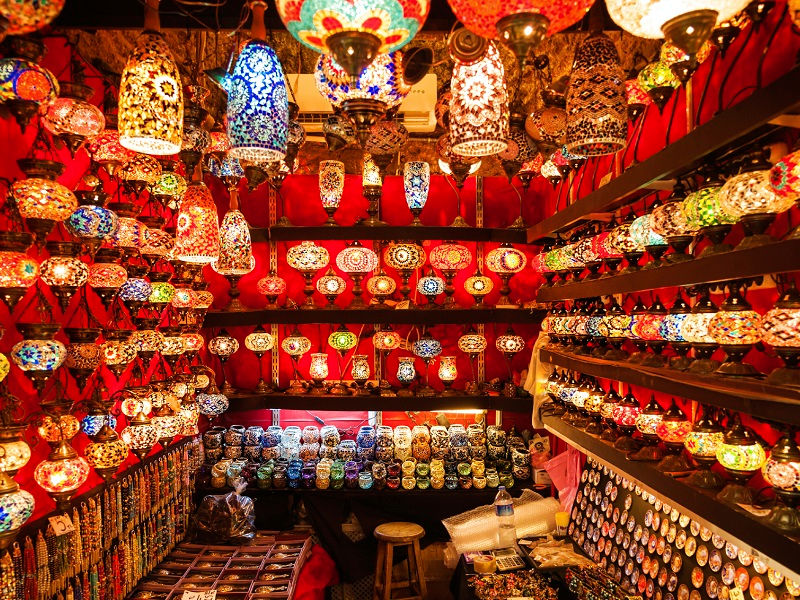
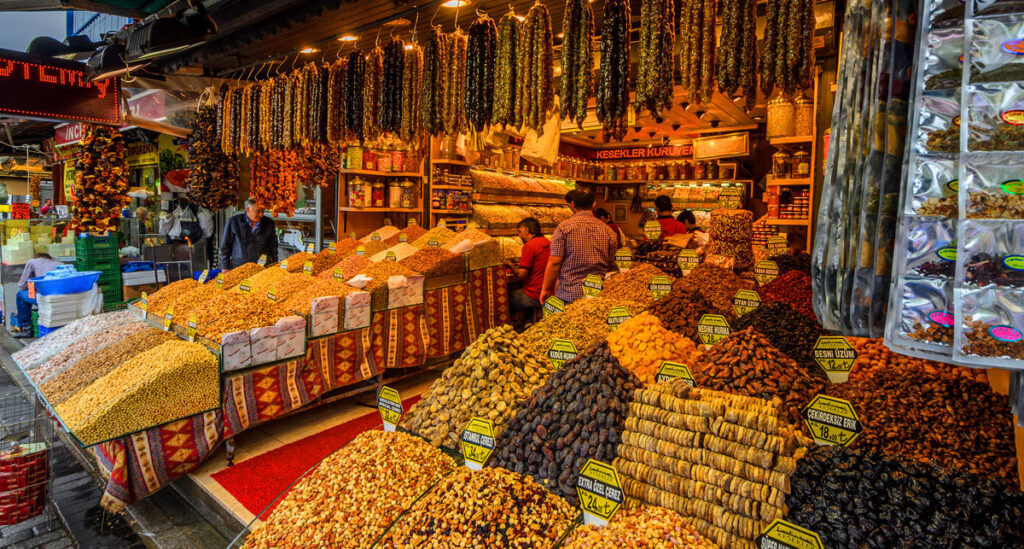
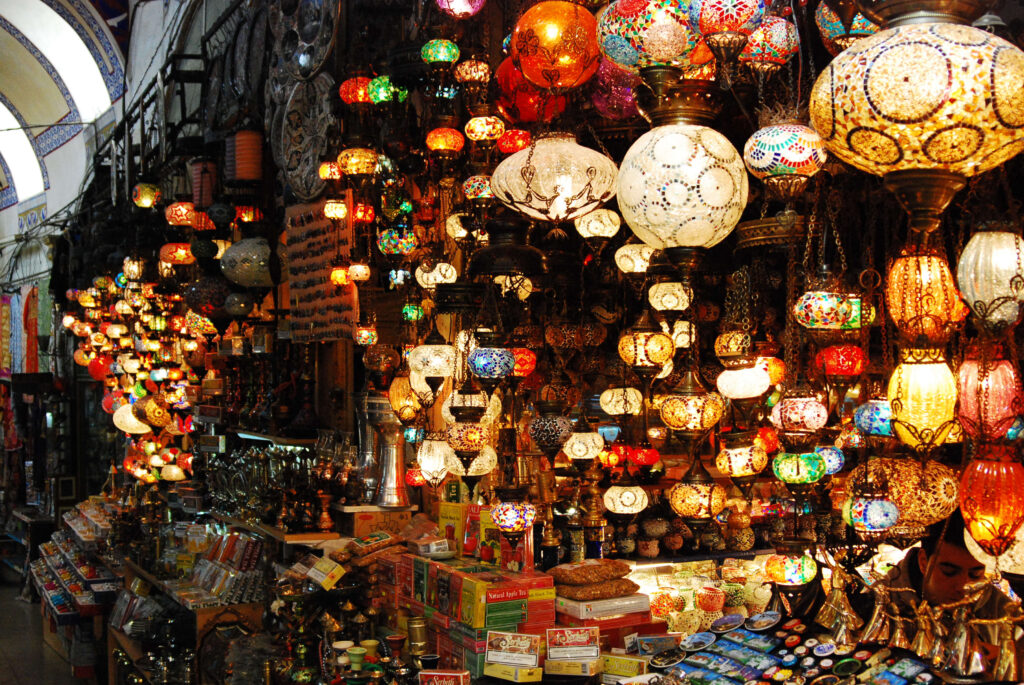
The Grand Bazaar in Istanbul is a treasure trove for food enthusiasts, offering an extensive selection of Turkish delight, aromatic spices, Turkish tea, and the finest Turkish coffee. Take your time to explore the stalls, sample the flavors, and bring home a taste of various Turkish delight.
Within the Grand Bazaar, immerse yourself in the vibrant atmosphere of the Spice Bazaar or Spice Market, where aromatic spices from across the globe create a sensory feast for your senses. Explore the colorful stalls and discover a world of exotic flavors and fragrances.
The Spice Market is not just about spices. It is also a treasure trove of other enticing goods. You’ll find a wide array of Turkish delights, dried fruits, nuts, traditional sweets, honey, and natural remedies, all beautifully displayed and tempting to the eye.
Visiting the Grand Bazaar is not just about shopping; it’s an immersive cultural experience that allows you to glimpse into Istanbul’s rich past and vibrant present. Whether you’re searching for unique souvenirs, immersing yourself in the local culture, or simply reveling in the bustling ambiance, the Grand Bazaar promises an unforgettable journey through Istanbul’s so much history and craftsmanship.
Activities that you may do after shopping in the Grand Bazaar
After your shopping in the Grand Bazaar and Spice Bazaar, you may want to take a leisurely stroll or a walking tour across the Galata Bridge and enjoy the scenic views of the Bosphorus Strait, the Golden Horn, and the city’s skyline. Marvel at the bustling activity on the water, including boats, ferries, and seagulls.
By the way, do not forget to try Balik Ekmek (Fish Sandwich). One of the popular culinary delights of the Galata Bridge is the balık ekmek, a traditional Turkish fish sandwich. Numerous small boats docked near the bridge serve these delicious sandwiches, typically made with freshly grilled or fried fish, served in a bun with various toppings. It’s a must-try local street food experience.
6. Discover the Galata Tower: A Timeless Symbol of Istanbul’s Rich History
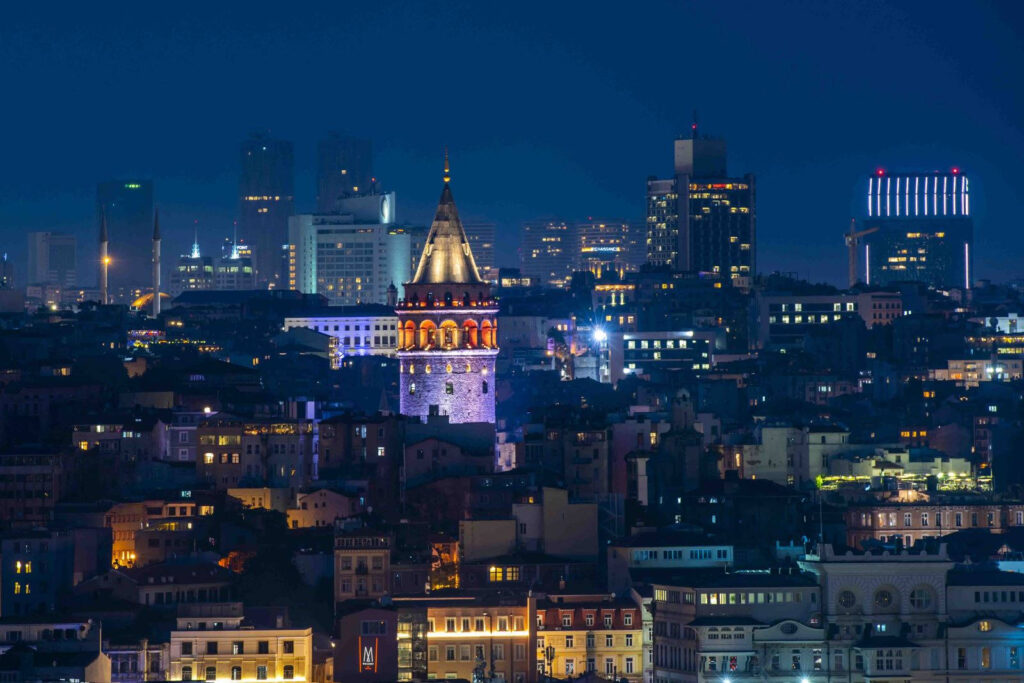
As one of the city’s landmarks, the Galata Tower, known as Galata Kulesi in Turkish, has a rich history dating back to the Byzantine empire. Originally constructed in the 6th century as a wooden tower, it was later rebuilt in its current form during the 14th century by the Genoese colony that resided in Galata at the time. Its purpose was to serve as a watchtower and a defensive structure to protect the city from potential threats.
Today, the Galata Tower serves as a museum with multiple floors dedicated to different exhibits and experiences. It is very popular among tourists and locals alike.
The fourth floor houses a museum displaying artifacts, including the preserved chain of the Golden Horn. There are tunnel stairs within the tower for access to the lower floors.
The third floor serves as a temporary exhibition hall, while the second floor features a simulation area with an animation of Hezârfen Ahmed Çelebi’s flight from the tower.
The first floor is a museum shop where visitors can purchase replicas and souvenirs.
The Galata Tower’s design was modified during restorations, and it now has a coffeehouse on the upper part. The roof was rebuilt after a fire in 1831 and features two wooden rooms that were used by the city’s fire brigade. The tower stands at a height of 62.59 meters and has a cylindrical stone body with a reinforced concrete roof.

Visitors can access the tower through marble stairs leading to the entrance gate. An elevator takes visitors up to the sixth floor, and from there, stone and steel stairs lead to higher floors.
The tower offers panoramic views of Istanbul and includes interactive exhibits, such as a model of Istanbul in the 16th century and a small sail cargo ship model.
The Galata Tower’s observation deck offers an unparalleled view at any time of day, but it truly comes alive during sunset when the sky transforms into a canvas of vivid colors. Watching the sun dip below the horizon while the city illuminates with twinkling lights is an unforgettable experience, etching memories into the minds of those fortunate enough to witness it.

With its historical significance, architectural beauty, and panoramic vistas, the Galata Tower stands as an emblematic symbol of Istanbul’s rich heritage and offers an unforgettable experience for all who ascend its heights. For those who are history buffs, visiting the tower is a must.
In order to get more info regarding visiting the Galata Tower, please check this link.
Activities that you may do after visiting the Galata Tower
After your visit to the Galata Tower, you may think of having a walk around the Istiklal Street and Taksim Square. Istiklal Avenue is a bustling pedestrian street located just a short walk from the Galata Tower. Lined with shops, boutiques, cafes, restaurants, and historical buildings, it is a vibrant hub of activity. Stroll along the Istiklal Street, shop for souvenirs, sample local delicacies, and soak up the lively atmosphere. This street ends with the Taksim Square.
Alternative to a walking tour of the Istiklal Street, you may take a leisurely stroll across the Galata Bridge through local streets, which spans the Golden Horn. As you walk, enjoy the scenic views of the waterway and the city’s skyline. The Galata bridge is also lined with fishing spots where locals and visitors gather to cast their lines and try their luck.
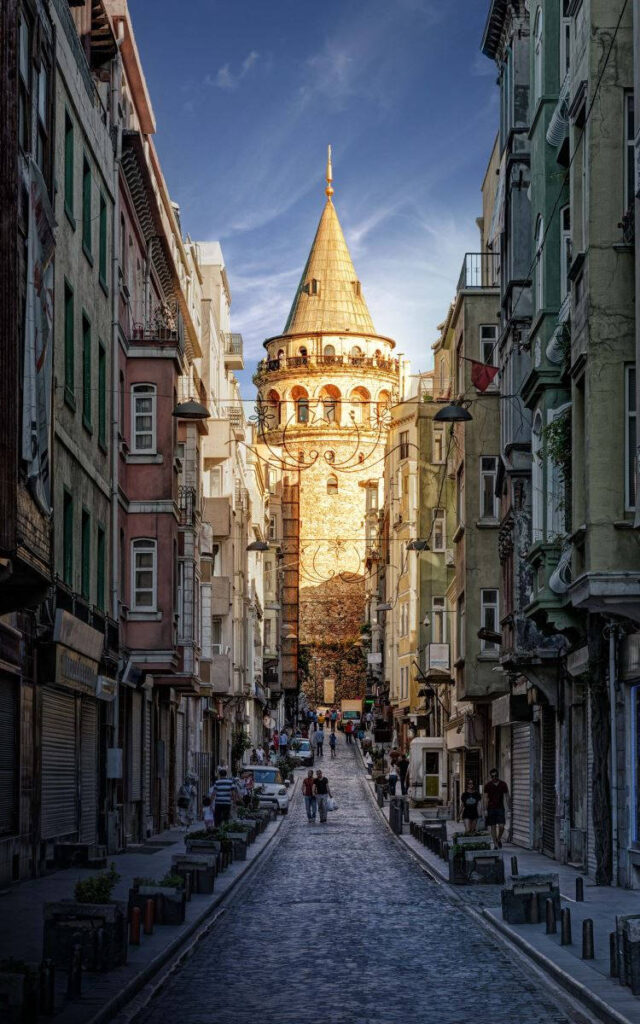
7. Visit the Galata Mevlevi Lodge Museum

The Galata Mevlevihane, also known as Kulekapısı Mevlevihanesi or Galipdede Tekkesi, is a significant Ottoman structure in Beyoğlu, Istanbul, Turkey. It was established in 1481 alongside the “Galata Sarayı Enderun Mektebi.” The Mevlevihane was founded by Divane (Semaî) Mehmed (Çelebi) Dede during the reign of Sultan Bayezid II. Over the years, it underwent repairs and took its final form during the reign of Sultan Abdulmecid.
In 1925, the Mevlevihane ceased its function, and the Semahane building was temporarily used as a school. However, in 1946, it was transferred to the Ministry of National Education and converted into a museum. After renovations, it reopened as the “Divan Literature Museum” in 1975 and later as the “Galata Mevlevihanesi Museum” in 2011.

The museum consists of three floors: the sema area, dervish rooms on the ground floor, and balconies on the upper floor. The sema area features a wooden floor, a mihrab, and a pulpit.
The dervish rooms exhibit artifacts related to Sufism, religious orders, and the Mevlevi dervishes.
The middle hall showcases the museum’s history, photographs, and maps of Mevlevi lodges.
The balconies display additional items from the museum’s collection, including exhibitions on ebru (marbling art), calligraphy, Hilye-i Şerif panels, and displays of Mehter and musical instruments.
The Ecnebiler Mahfili section houses engravings and impressions by foreign visitors during the era of Ottoman Empire.
The Galata Mevlevihanesi Museum offers visitors a glimpse into the history of the Mevlevi Order, which is a sufi order based in Konya city, in central Turkey.
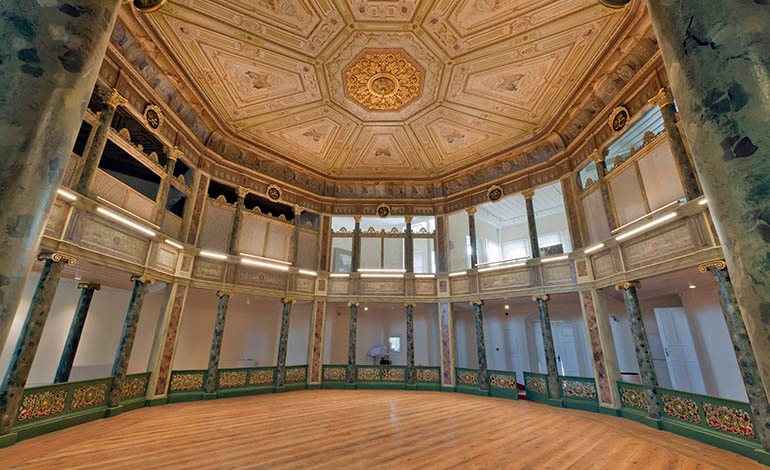
Whirling Dervishes
As you enter this historic sanctuary, prepare to be captivated by the mesmerizing rituals performed by the renowned Whirling Dervishes.
Experience the profound spiritual journey of their sema (whirling dance), a breathtaking display of devotion and inner harmony. Witnessing a ceremony of the Whirling Dervishes is a profound journey into the spiritual traditions of Turkey, offering a serene and enchanting encounter with the captivating world of Sufi culture.
It is an experience that immerses you in the mesmerizing whirling dance, where the whirling dervishes spin gracefully, symbolizing a spiritual union with the divine.
This ancient ritual provides a window into the depths of Sufism, offering a glimpse of its philosophy, devotion, and the pursuit of spiritual enlightenment.
The Galata Tower and Istiklal Street are situated within walking distance from the museum.
For Istanbul Museum Pass, please click here.
8. Visit the Museum of Turkish and Islamic Arts
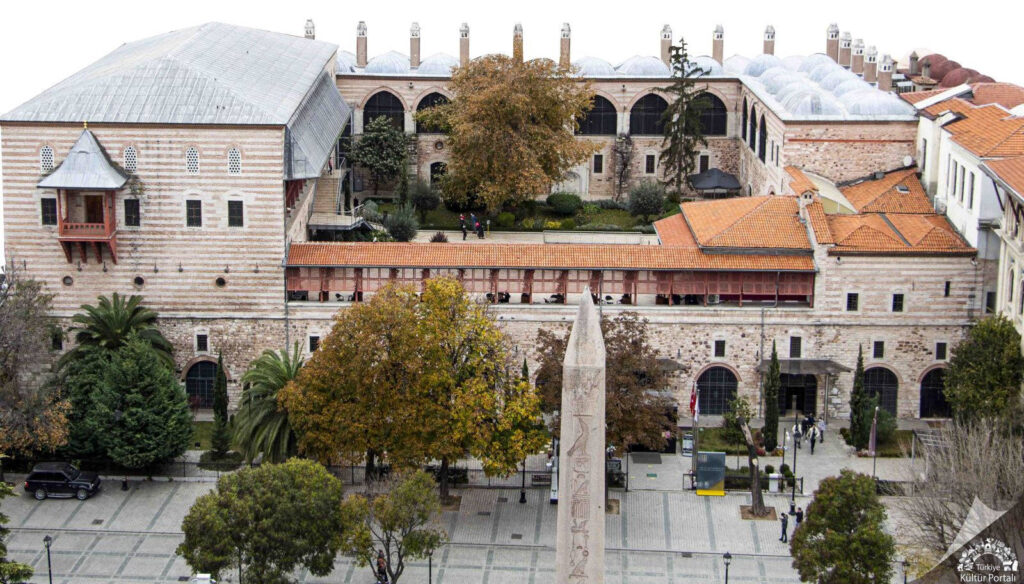
The Turkish and Islamic Arts Museum in Istanbul is the first museum in Turkey to exhibit a comprehensive collection of Turkish and Islamic art. It was established in 1914 and moved to its current location in the Ibrahim Pasha Palace in 1983.
With over 40,000 artifacts, including rare pieces, the museum covers a wide range of artistic works from early Islamic times to the final period of the Ottoman Empire.
Notable exhibits include the Damascus Documents collection of Quranic manuscripts, the door wings and knocker of the Cizre Grand Mosque, a carved wooden pillar known as the Çifte Sütunce, and various incense burners and lanterns.
Through art galleries, the museum offers visitors a rich insight into the artistic and cultural heritage of the Turkish and Islamic regions.
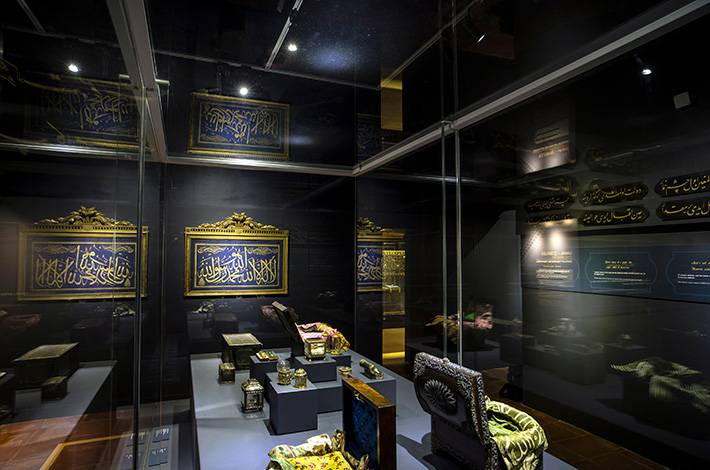
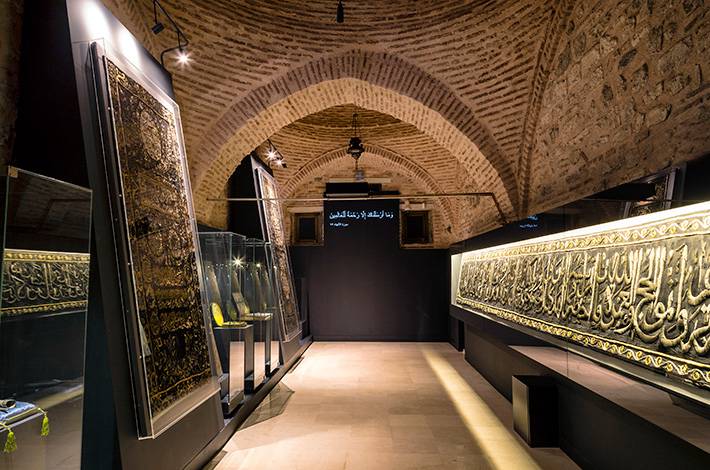
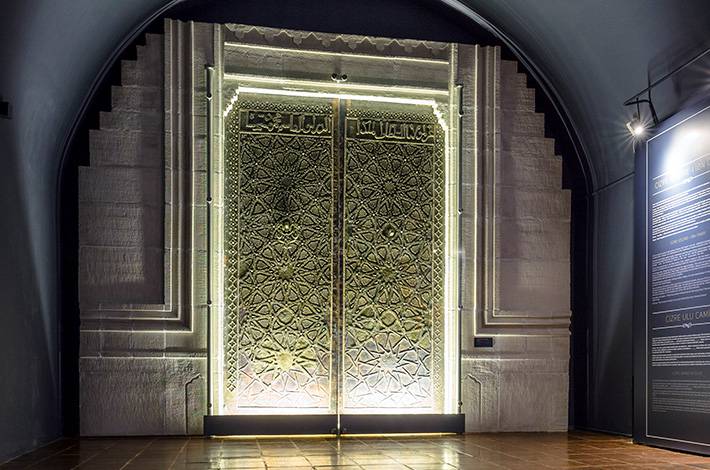
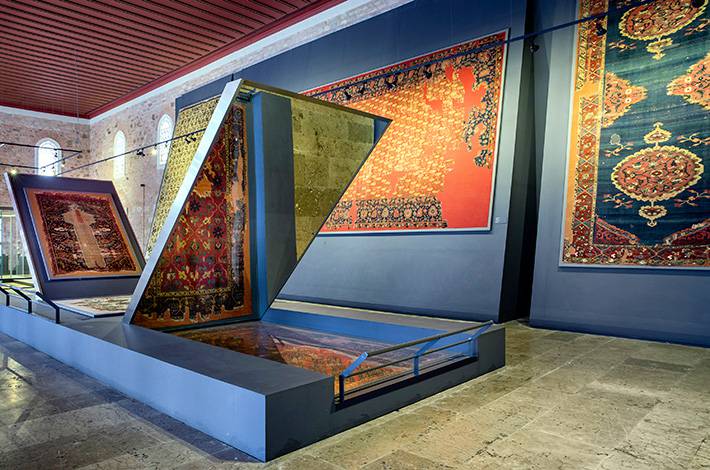
Hagia Sofia, Blue Mosque and Sultan Ahmet Square are just a short walk from The Turkish and Islamic Arts Museum.
For Istanbul Museum Pass, please click here.
9. Visit the Istanbul Archaeology Museums
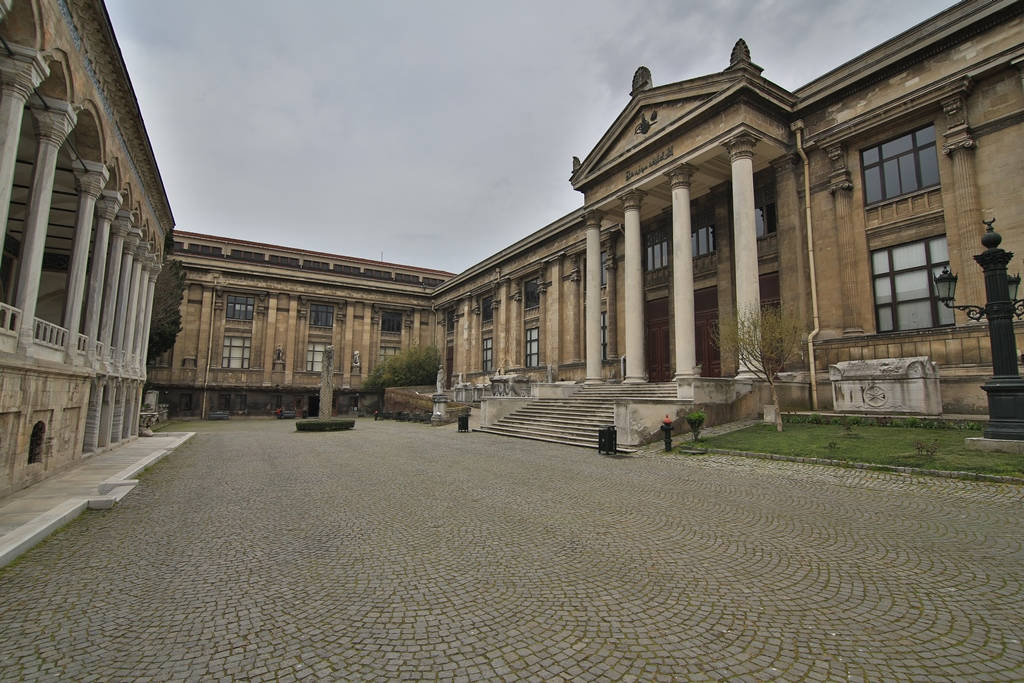
The Istanbul Archaeology Museums are considered the pioneers of museum work in Turkey.
The traces of collecting historical artifacts in the Ottoman Empire can be traced back to the reign of Fatih Sultan Mehmet. However, the institutional establishment of systematic museum work began with the founding of the Istanbul Archaeology Museums in 1869 under the name “Müze-i Hümayun” (Imperial Museum).
Prior to that date, the collection of archaeological artifacts was housed in Aya İrini Church, forming the foundation of the present-day Istanbul Archaeological Museums.
When Aya İrini Church became insufficient, a search for a new location was initiated. Due to financial limitations, instead of constructing a new building, the “Çinili Köşk” (Tiled Pavilion) was converted into a museum.
Significant advancements in Turkish museology occurred when Osman Hamdi Bey, the son of Prime Minister Edhem Pasha, was appointed as the museum director in 1881.
The discoveries made during excavations at Nemrut Dağı, Myrina, Kyme, Ailoia Necropolis, and the Temple of Hecate in Lagina necessitated the need for a new museum building.
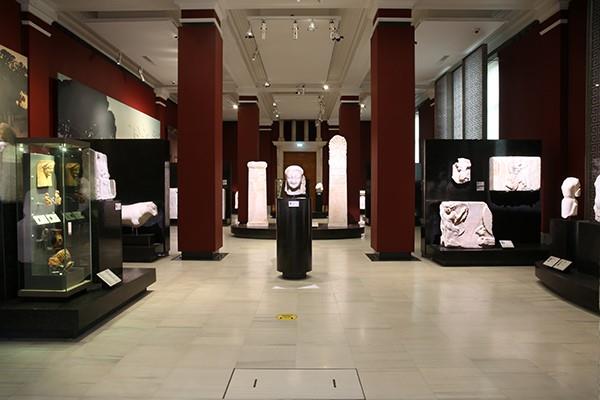
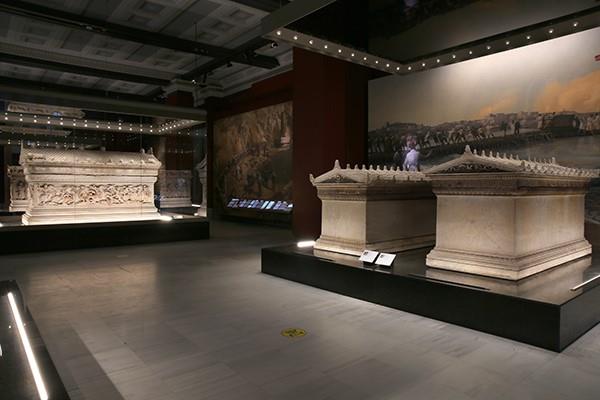
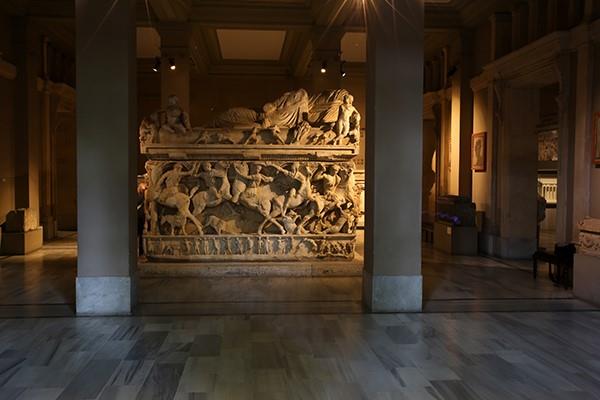
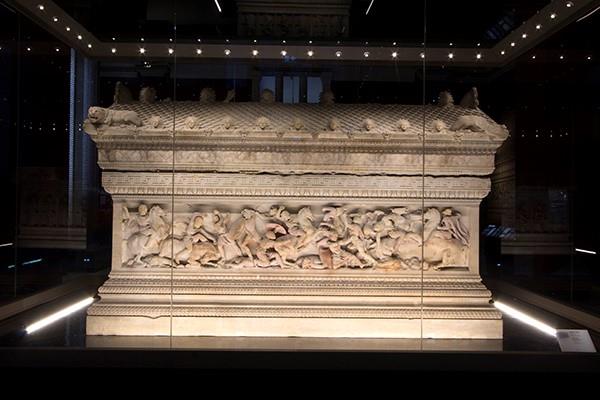
The building of the Istanbul Archaeological Museum is one of the rare structures in the world that was specifically constructed as a museum. Opened for visitation in 1891, the Archaeological Museum is a remarkable example of Neo-Classical architecture in Istanbul, boasting an impressive facade. Its two entrances, accessed by grand staircases, resemble a temple with columns and pediments. The Ottoman Turkish inscription in Kufic script on the pediment reads ‘Asar-ı Atika Müzesi’ (Museum of Ancient Artifacts). Above the inscription, there is a Tughra (imperial monogram) belonging to Sultan Abdulhamid II, who commissioned the construction of the classical building.
For Istanbul Museum Pass, please click here.
10. Discover the Maiden’s Tower: Istanbul’s Captivating Icon

As one of the top things to do in Istanbul, a visit to the Maiden’s Tower is a captivating experience that should not be missed.
The Maiden’s Tower, also known as Kız Kulesi in Turkish, is a captivating landmark located on a small islet at the entrance of the Bosphorus Strait in Istanbul, Turkey. This iconic tower has a rich history and holds a prominent place in the city’s folklore and architecture.
The tower stands tall, rising from a rocky outcrop in the shimmering waters of the Bosphorus River. It is a unique cylindrical structure with a conical roof, exuding an aura of mystery and charm.
The tower itself has undergone various transformations throughout its history, resulting in a blend of architectural styles that reflect the influence of different civilizations.
To reach the tower, you can take a short boat ride from various points along the Bosphorus shoreline. As you approach the islet, the tower’s distinctive silhouette becomes more pronounced against the backdrop of the sparkling water.
Upon arrival, you can explore the interior of the tower, which has been converted into a museum and a café. The museum showcases artifacts and exhibits that highlight the tower’s history, including its role as a lighthouse, a customs station, and a defensive structure throughout different eras.
From the observation deck at the top, visitors can enjoy breathtaking views of Istanbul’s skyline, the Bosphorus Strait, and the surrounding areas.
The Maiden’s Tower also offers a unique dining experience. The tower’s café and restaurant serve delectable Turkish cuisine, allowing visitors to enjoy a meal while surrounded by the enchanting atmosphere of the Bosphorus Rive and European & Asian Side of Istanbul.
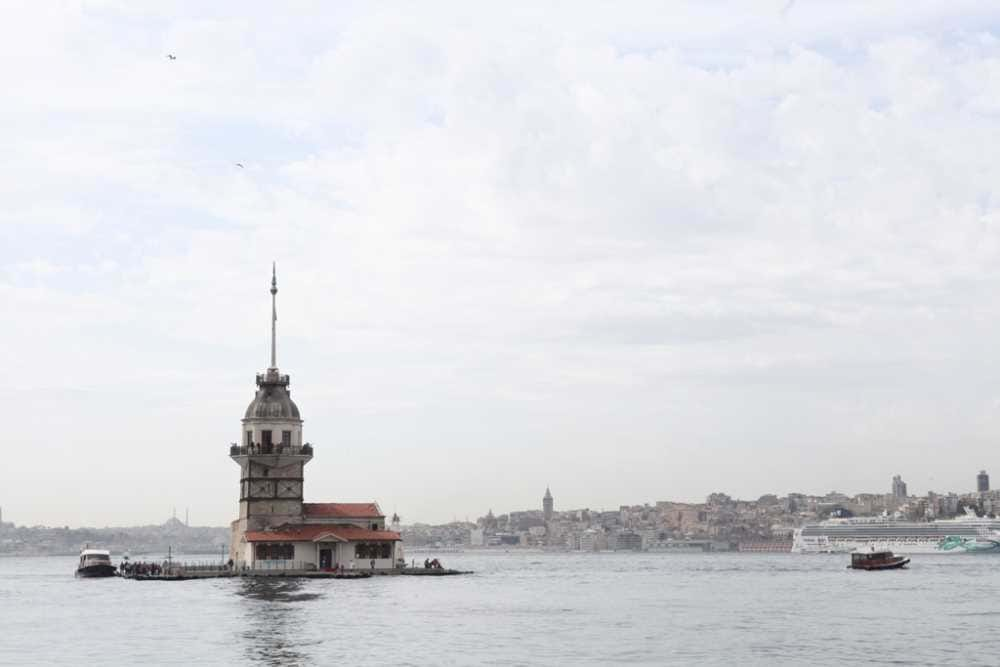
Activities that you may do after visiting the Maiden’s Tower
During or after this visit, you may also take a leisurely walk along the Üsküdar waterfront promenade, known as the Üsküdar Sahil Yolu. Enjoy stunning views of the Bosphorus Strait, watch the boats pass by, and relax in one of the many waterfront cafes.
As you are in the Asian side of Istanbul, you should also explore the local bustling bazaars and markets in Üsküdar, such as the Büyük Çarşı and the Mihrimah Sultan Market. Shop for traditional Turkish goods, including Turkish coffee, Turkish delight, spices, textiles, ceramics, and handicrafts.
After your visit to the Maiden’s Tower, you may want to explore the magnificent Beylerbeyi Palace, located on the Asian side of Istanbul. One of the highlights of a visit to Beylerbeyi Palace is the beautiful garden surrounding the palace complex. Stroll through the well-manicured grounds, adorned with colorful flowers, tall palm trees, and scenic views of the Bosphorus River. Take a moment to relax and soak in the tranquil ambiance, imagining the leisurely moments enjoyed by inhabitants in Beylerbeyi Palace in years past.
11. Visit the Museum of Chora Church
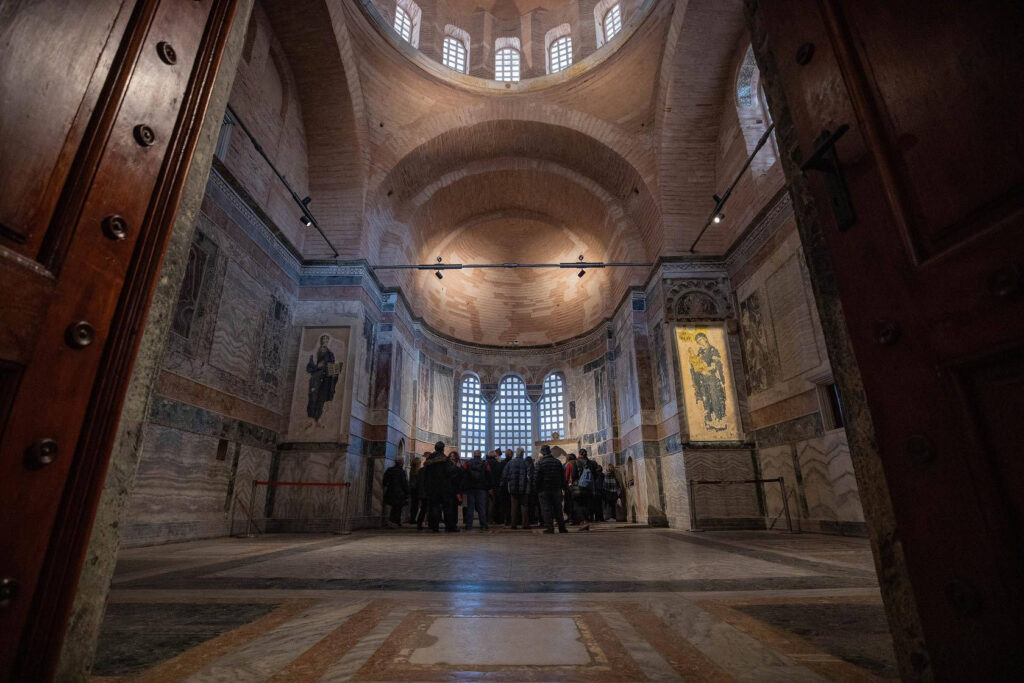
For a history buff, one of the things to do in Istanbul is to visit the Chora Church, as one of the leading Byzantine church in Istanbul, Turkey.
The Kariye, also known as the Chora Church in Istanbul, has a history dating back to the 5th century. It was initially a chapel outside the city walls and was later replaced by the first Chora Church commissioned by Emperor Justinian I. Over the years, the church underwent various renovations and additions, including mosaics and frescoes that represent the finest examples of Late Byzantine art from the 14th century.
After the conquest of Istanbul, it was converted into a mosque and later transformed into a museum in 1945. The mosaics and frescoes were uncovered through restoration work in the mid-20th century.
Today, the Kariye or Chora Church stands as a testament to Istanbul’s rich historical and artistic heritage.
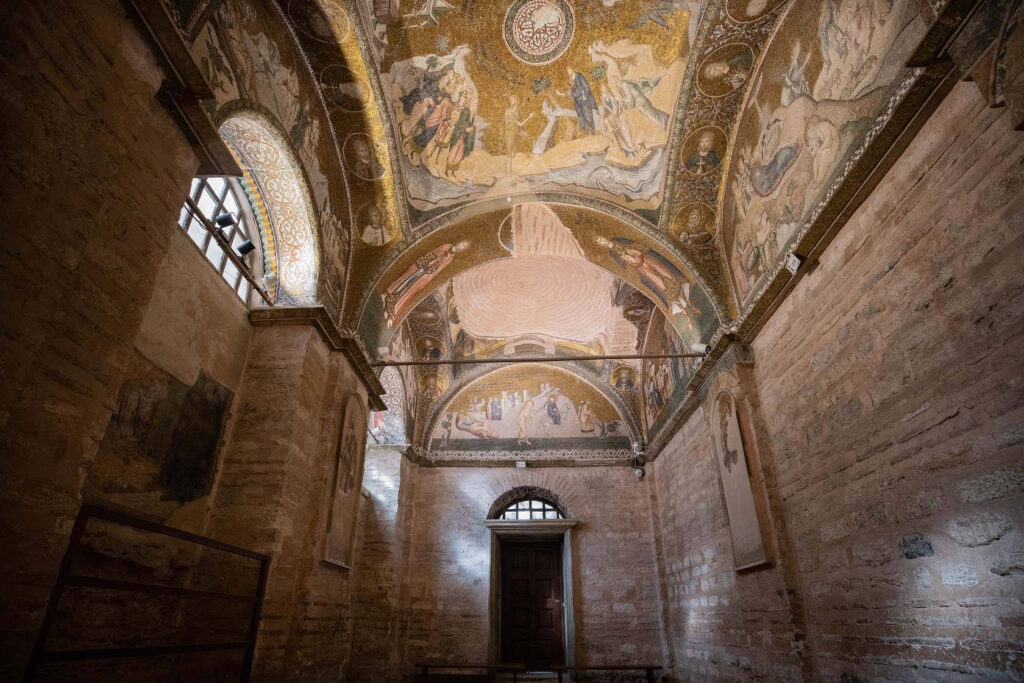
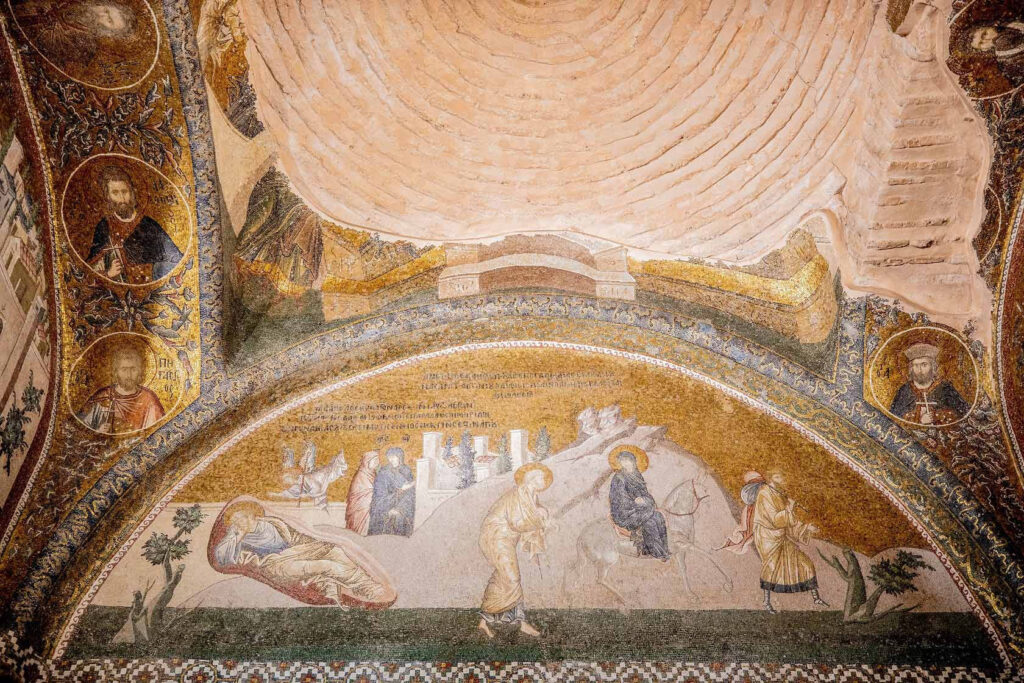
12. Explore the Rumeli Fortress
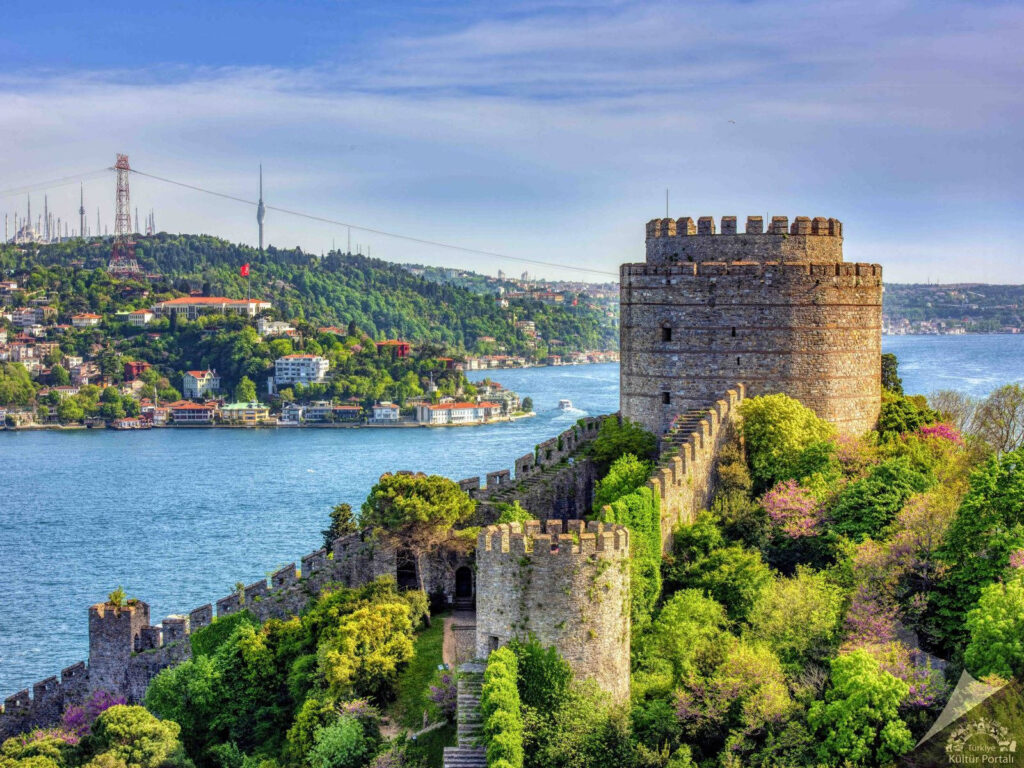
The Fortress Museum in Istanbul incorporates Rumeli, Yedikule, and Anadolu Fortresses, with Rumeli Fortress being the most prominent. Built by Mehmet the Conqueror in 1452, the fortress was intended to prevent attacks and block aid from the north of the Bosphorus before the conquest of Istanbul.
It is located opposite the Anadolu Fortress, constructed by Sultan I. Beyazıt in 1394, and both fortresses are situated in the narrowest part of the Bosphorus.
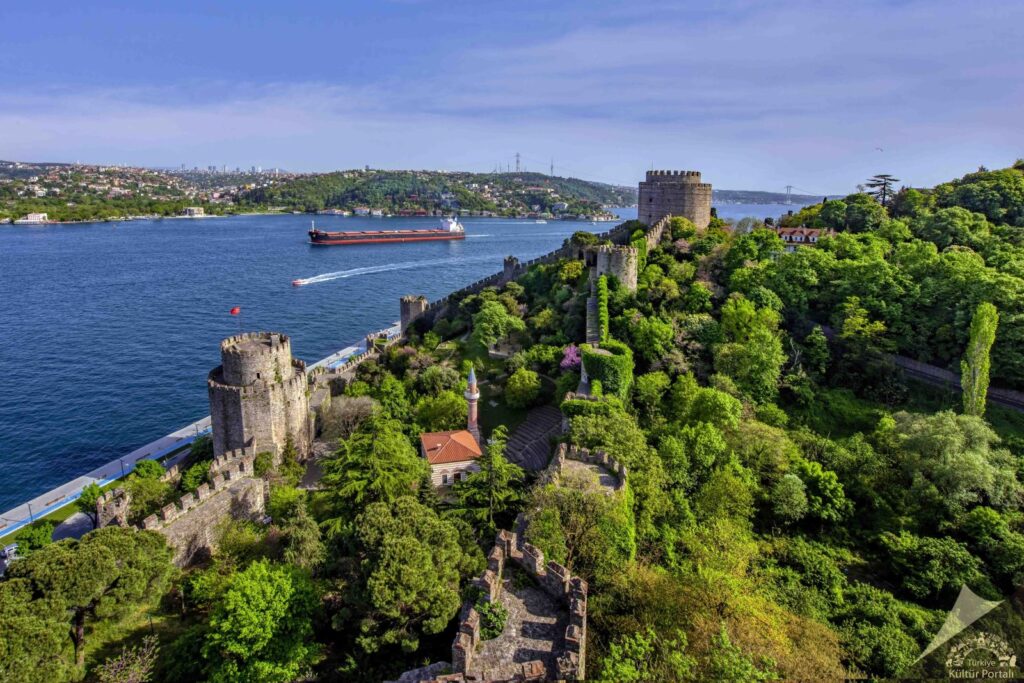
Originally known as “Kulle-i Cedide” and later “Yenice Hisar” or “Boğazkesen Fortress,” Rumeli Fortress was constructed with timber from Izmit and Karadeniz Ereğlisi, while the stones were sourced from various parts of Anatolia, including Byzantine ruins.
Converted into a museum in 1953, it opened to visitors in 1968. The museum also features an open theater structure, though performances no longer take place there. The mosque originally built during the construction of Rumeli Fortress was reconstructed in its original form in 2014.
